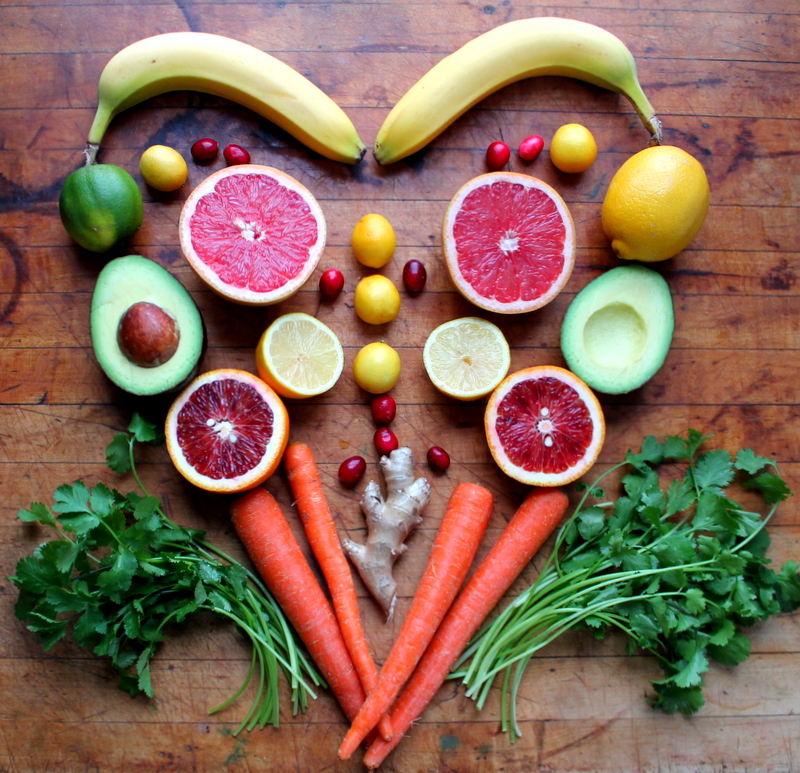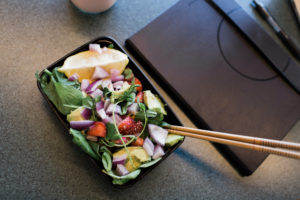
Does the thought of eating a salad ever seem like a boring chore? It doesn’t have to! Healthy eating is so much more sustainable when you fall in love with your nutritious concoctions.
Check out some of our top tips for sprucing up your salad plate!
1. Make Your Own Dressing
The general outline for creating a great-tasting salad dressing is as follows: Start with some sort of fat or creamy base, such as olive oil, sesame oil, avocado, yogurt, or tahini. Combine with something tart, such as any type of vinegar, or fresh-squeezed citrus juice. Go easy on the tart element, especially if it’s something strong like balsamic vinegar. You can always add more. Optionally, you may add a sweet element- honey, maple syrup, or Agave syrup are good choices. Lastly, add salt, pepper, or any other spices and herbs that you enjoy. To really get creative, you could experiment with adding any number of other condiments. Soy sauce, mayonnaise, anchovy paste, hot sauce, and mustard have all been used as successful additions to various salad dressings. To combine the ingredients, either whisk the dressing vigorously by hand or use a blender. Here are some suggested combinations to get you started:
- Simple Yet Delicious: ½ c Olive Oil + Juice of ½ lemon or lime + Salt + Pepper
- Sweet & Spicy Sesame: ½ c Sesame Oil or Tahini + 2 Tablespoons Rice Vinegar + 2 teaspoons honey (or to taste) + Salt + Pepper + Sprinkle of sesame seeds + Cayenne or Hot Sauce to taste
- Creamy Yogurt Dill: ½ c Plain Yogurt + Juice of 1/2 lemon + 1 clove chopped garlic + Generous amount of fresh or dried dill + Salt + Pepper
2. Taste The Rainbow
No, we’re not talking about Skittles. As humans, we are hard-wired to eat with our eyes- think of how appealing the food on cooking shows or blogs looks. When our food looks beautiful and appetizing, we naturally get excited to eat it. This also makes sense from a nutritional standpoint, as different color pigments in plants indicate the presence of different nutrients. Next time you go the market, challenge yourself to find salad ingredients that represent every color of the rainbow. Here are some suggestions, organized by color:
- Red: Red peppers, strawberries, tomatoes, apples
- Orange: Orange peppers, tangerines, carrots, papaya, mango
- Yellow: Yellow peppers, starfruit, pineapple, summer squash, corn
- Green: Any leafy greens, broccoli, avocado, cucumbers, edamame, peas
- Purple: Beets, purple cauliflower, red onion, red cabbage, purple carrots
- White: Cauliflower, endive, fennel, parsnips, sweet onions

3. Add Some Crunch
Salad instantly becomes more fun and satisfying with a little crunch. A fun way to experience some crunch while adding more nutrition into your salad is to sprinkle in some chopped nuts (we recommend raw nuts, learn why here), such as peanuts, almonds, cashews, or pistachios; or seeds such as sunflower or pumpkin. Craving something a bit more decadent? Make croutons! Croutons tend to get a bad rap in the world of healthy food, because the packaged varieties are usually loaded with unhealthy oils, artificial preservatives, deep fried, and heavy on the salt. It’s a little-known fact that croutons are actually very easy to make, and you can make yours with healthy fats, better-for-you bread, and your own favorite seasonings.
- To make your own croutons: Chop some of your favorite whole-grain or sprouted grain bread into small cubes (this is a great way to use up bread that is becoming stale or old). Coat the bread cubes with some softened coconut oil or ghee (clarified butter), chopped garlic, and a little salt and pepper. Spread evenly on a baking sheet and bake at 400’ until golden brown (9-15 minutes depending on size). Yum!
4. Salad-ify Your Lunch
Do you have a favorite sandwich, wrap, taco, or pizza pie that you couldn’t imagine giving up? Nine times out of ten, you can turn it into a salad! Say, for example, that you love turkey club sandwiches. A turkey club salad might look something like this:
- A big handful each of Romaine lettuce and baby spinach
- One lean roasted turkey breast, chopped
- 1-2 pieces crispy bacon, crumbled into bits or cubed
- Cherry tomatoes, halved; or whole tomatoes, diced
- 1 Tbsp of Alfalfa sprouts
- 1 oz Monterey Jack cheese, chopped or shredded
- 5-8 homemade croutons from recipe above
- Dressing made from olive oil, mayonnaise, mustard, lemon juice, salt and pepper
The key with this method is to increase the veggies, and downsize the less-healthy elements. For example, if you choose to eat a turkey club salad instead of the sandwich, you’ll eat about 50-75% less saturated animal fat (found in the turkey, bacon, and cheese), and get a big boost in nutrition from the extra veggies. You’ll also get healthy fats and vitamin C from your dressing- all while maintaining the same basic flavors.
5.Try A Warm Salad
A “warm salad” usually refers to a salad made mostly with cooked food elements, and doesn’t necessarily have to be served warm. If you find yourself generally unimpressed by the tastes and textures of raw vegetables, this one is for you.
Roasting, sauteeing or grilling vegetables can be a great way to intensify and enhance their natural flavors. Just make sure that they are cooked with healthy fats- good choices for cooking are coconut oil, walnut oil, sesame oil, or ghee (clarified butter).
A delicious method for making warm salads involves combining your cooked veggies of choice with cooked whole grains and/or legumes. Think rice and beans, or quinoa and edamame. You can make the cooked elements ahead of time, and refrigerate or freeze them until it’s time to eat. Also, you can dress warm salads with the same types of dressings you would use for raw salads. And, cooked veggies give you the opportunity to infuse flavor directly- try sauteeing some green beans with fresh garlic for example, or roasting potatoes with turmeric, coriander and cayenne. Here is a simple warm salad recipe to get you started:
Recipe
Mediterranean Warm Salad
- Green beans, sautéed until just tender, with chopped garlic and black pepper
- Cherry tomatoes, salted and placed in hot skillet until they burst
- Chicken breast, grilled or roasted and cut into strips or shredded
- Capers (to taste)
- Dressing: Olive oil, lemon juice, salt, pepper, and lots of fresh thyme and/or parsley
Combine all ingredients and mix well. Serve alone or over a bed of fresh greens. For a vegetarian or vegan option: Replace chicken with chickpeas and/or cooked quinoa.
We hope some of these tips will help you put salad back on the menu!
 About the Author
About the Author
Julia Workman loves to cook and experiment with making healthy food taste delicious. Stay tuned for more of her creative, colorful dishes sure to fuel your energy and satisfy your palate!
